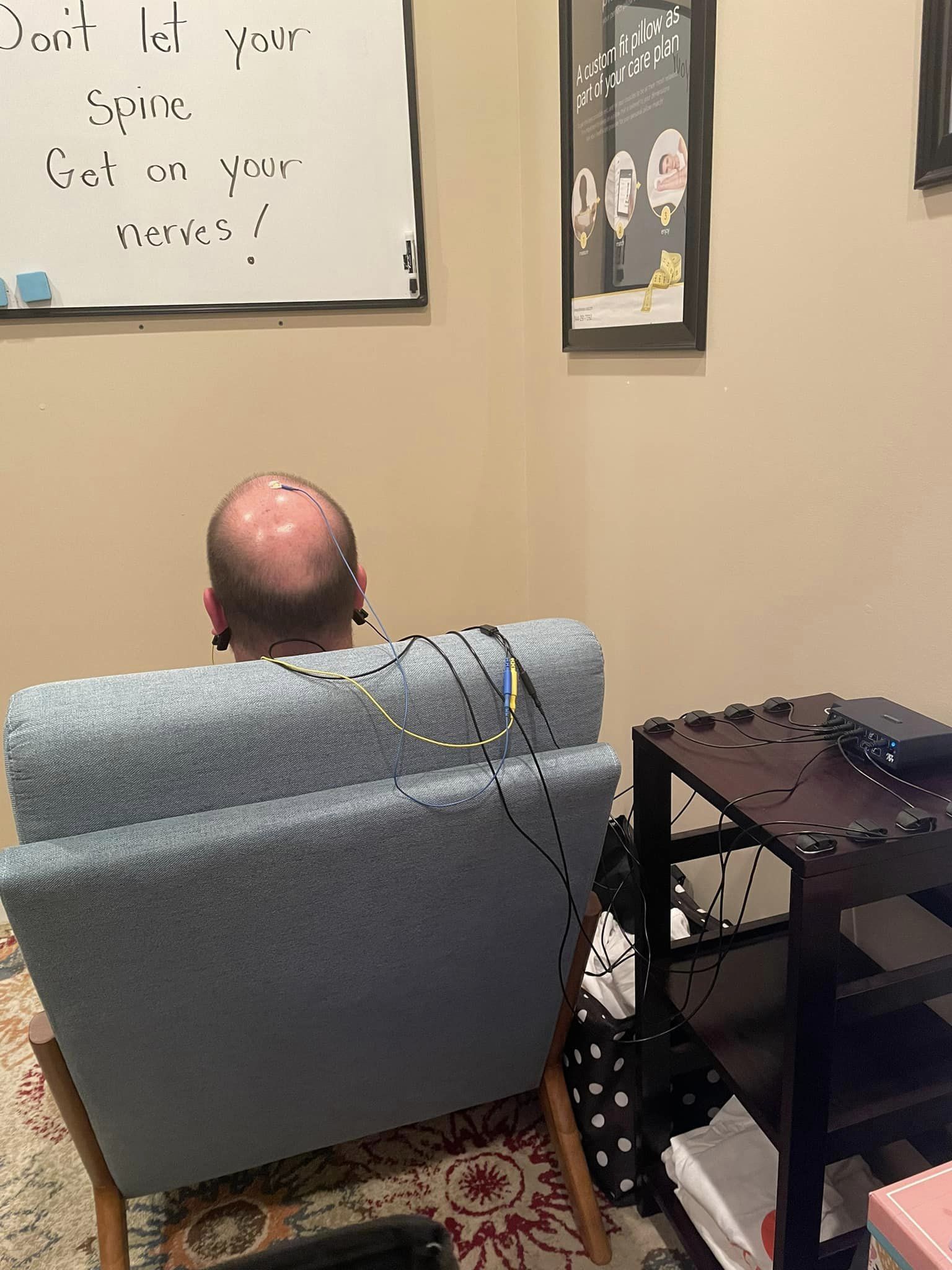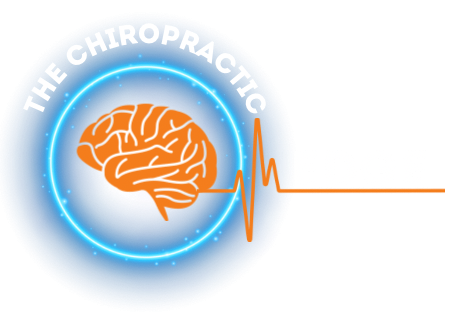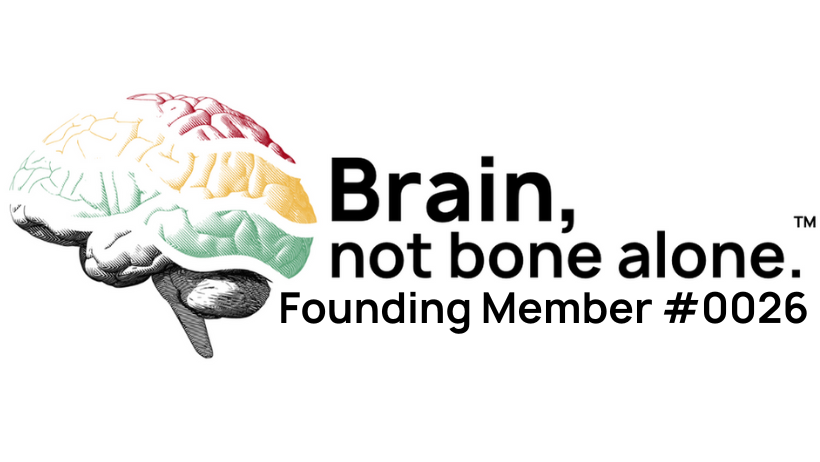Save money on your health; use our codes for
exclusive discounts in our shop!
Somavedic EMP Protection: (10% Off)
Discount Code: roadmapdoc
Potential Power Nutrition: (10% Off)
Discount Code: TR001
NeuroInfiniti Stress Response Evaluation
NeuroInfiniti Stress Response Evaluation
Stress leads to imbalance in our nervous system. Nervous system imbalance is implicated in the majority of dysfunction and health challenges that one experiences. The Stress Response Evaluation performed using the NeuroInfiniti instrument establishes a baseline for how your nervous system responds to and subsequently recovers from stress. This information is then used to monitor the progress of your care as you move toward a more optimal state of nervous system balance.
How we measure
your stress response:
The quick twenty minute computerized evaluation will reveal the state of your central nervous system function as compared to ideal responses. The exam is completely non-invasive, where sensors are directly attached to your skin in the regions of your upper back, the top of your head, and your fingers.
This provides a dynamic analysis of the central nervous system that measures the current state of function of the cortex of the brain and how it influences the function of the limbic system of the brain. The limbic system is the seat of the autonomic nervous system and typical limbic system activities are respiration, heart rate, hand temperature, skin conductance and muscle action.
What is Measured?
BRAIN WAVES
This portion of the exam concerns the ability of the brain to be busy when necessary and to rest when necessary. The Stress Response Evaluation utilizes a cognitive, an emotional, and a physical challenge, each followed by a recovery period. Stress events require increased brain activity, exhibited as increased Beta brain waves (wide awake, focused, alert), and when in recovery increased Alpha (conscious relaxation)/Theta (light sleep) brain waves should be exhibited.
HEART RATE VARIABILITY
Heart rate variability is an effective method of measuring stress effects in your life. Research has established that HRV is also a good method of measuring the effectiveness of the care provided in this office.
HEART RATE
We have long been aware of the importance of heart rate in maintaining good health responses; however, just taking a person’s pulse is not enough information to tell us what happens during stress situations. The Stress Response Evaluation gives us the ability to determine what speeds up the heart rate, and how quickly it is able to return to normal. There is a direct relationship between breathing and heart rates.
SKIN CONDUCTANCE
The amount of moisture produced by the sweat glands in the hands is a direct result of stress. More hand moisture means a higher stress response. We can measure your ability to reduce the effects of your stressors. This means improved neurological responses.
TEMPERATURE
The normal response to stress is for the body to withdraw blood volume from the extremities and pool it in the organs. This action reduces the temperature in the hands and feet.
RESPIRATION RATE
While we are aware of changes in respiration rate during exertion, we seldom use it as a measurement of health. As there is a relationship between stress and oxygen requirement, the respiratory rate is very important. The pattern of breathing is equally as important, such as chest elevation versus diaphragmatic breathing.
MUSCLE ACTIVITY
We can measure muscle activity throughout the body in both relaxed resting mode or in active motion mode. The trapezius and facial muscles are good indicators of muscles that become over-tightened as a result of the stress response.
What Results Should I Expect?
BALANCED
This type of nervous system will demonstrate signs of: high energy, few symptoms, resistance to infections, positive mental attitude, present time consciousness, mentally alert, excellent health, looks younger than years, remains active and vibrant. The thermal scanner measures the temperature along the spine. This gives us insight into where there may be misalignment, irritated nerve endings, inflammation and ultimately decreased organ and muscle function at those levels.
UNDER-AROUSED
This type of nervous system will demonstrate signs of ADD (including impulsivity, distraction, & disorganization), depression, lack of motivation, poor concentration, spaciness, low blood pressure, hypoglycemia, constipation, low pain threshold , difficulty awakening, cognitive worry, irritability, incontinence, lack of energy, etc.
OVER-AROUSED
This type of nervous system will demonstrate signs of cold hands, tight muscles, teeth grinding, anxiety, heart palpitations, restless sleep, poor social awareness, poor comprehension, poor expression of emotions, re-current infections, multiple competing trains of thought, high blood pressure, accelerated aging, irritable bowel, high blood pressure etc.
UNSTABLE
This type of nervous system oscillates between under arousal and over arousal, and may demonstrate signs in both over and under aroused plus migraine headaches, seizure, narcolepsy, sleepwalking, hot flashes, PMS, multiple chemical sensitivities, bed-wetting, eating disorders, bipolar disorder, mood swings, panic attacks, etc.
EXHAUSTED
This type of nervous system may demonstrate signs of all of those listed in over-aroused plus Chronic Fatigue Syndrome, Epstein-Barr Syndrome, M.S., ALS, RA, Fibromyalgia, Cancer, all autoimmune system disorders.
Ask Yourself This Question…
Do I want care that deals with the symptoms,
or do I want care that addresses the cause?



